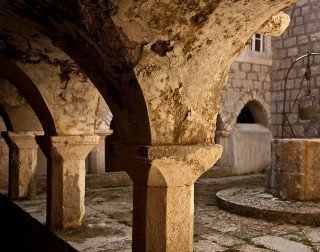Museums & sights
The Museum of Apoxyomenos
The Museum of Apoxyomenos is a unique contemporary museum dedicated to a majestic work of art – a sizeable ancient bronze statue of a young athlete, Apoxyomenos. Apoxyomenos was created between the 2nd and 1st century B.C. and was modelled after an older, classic prototype from the works of the renowned Greek sculptor Lysippos. The statue finished in the sea surrounding Lošinj about 1,800 years ago and was extracted in 1999. Well-preserved and fascinatingly beautiful, the Lošinj Apoxyomenos is one of the most important artefacts of the world’s ancient heritage.
The Lošinj Museum
The Lošinj Museum consists of three buildings on two islands: the Tower in Veli Lošinj and the Fritzy Palace in Mali Lošinj (both on the island of Lošinj), and the Archaeological Collection in Osor (on the island of Cres). The circular defensive tower from the 15th-century tells the tale of the famous maritime and early tourism history of Veli Lošinj. The historical Fritzy Palace, which also serves as the home of the Lošinj Museum, offers a rich exhibition programme throughout the year, along with its permanent exhibitions of the Piperata and Mihičić art collections, the photograph collection of Dante Lussin, and other exciting exhibitions.
The Archaeological Collection in Osor
The Archaeological Collection in Osor, located in the Renaissance town hall with a loggia dating back to 1889, captures the pinnacles of old Osor through selected exhibits from Roman and Mediaeval times. The sacral collection in the nearby Bishop's Palace, however, depicts the glory of the former Osor Diocese.
True art treasures can also be found in the many island churches, and primarily in the former Cathedral of the Ascension of Mary in Osor and the parish Church of St. Anthony the Abbot in Veli Lošinj, both of which stand out thanks to the beauty of their architecture and opulence of their interiors. Also worth visiting is the parish Church of St. Nicholas on the island of Susak because of its unusual painted crucifix dating back to the Romanesque period, called Veli Buoh (Great God).


